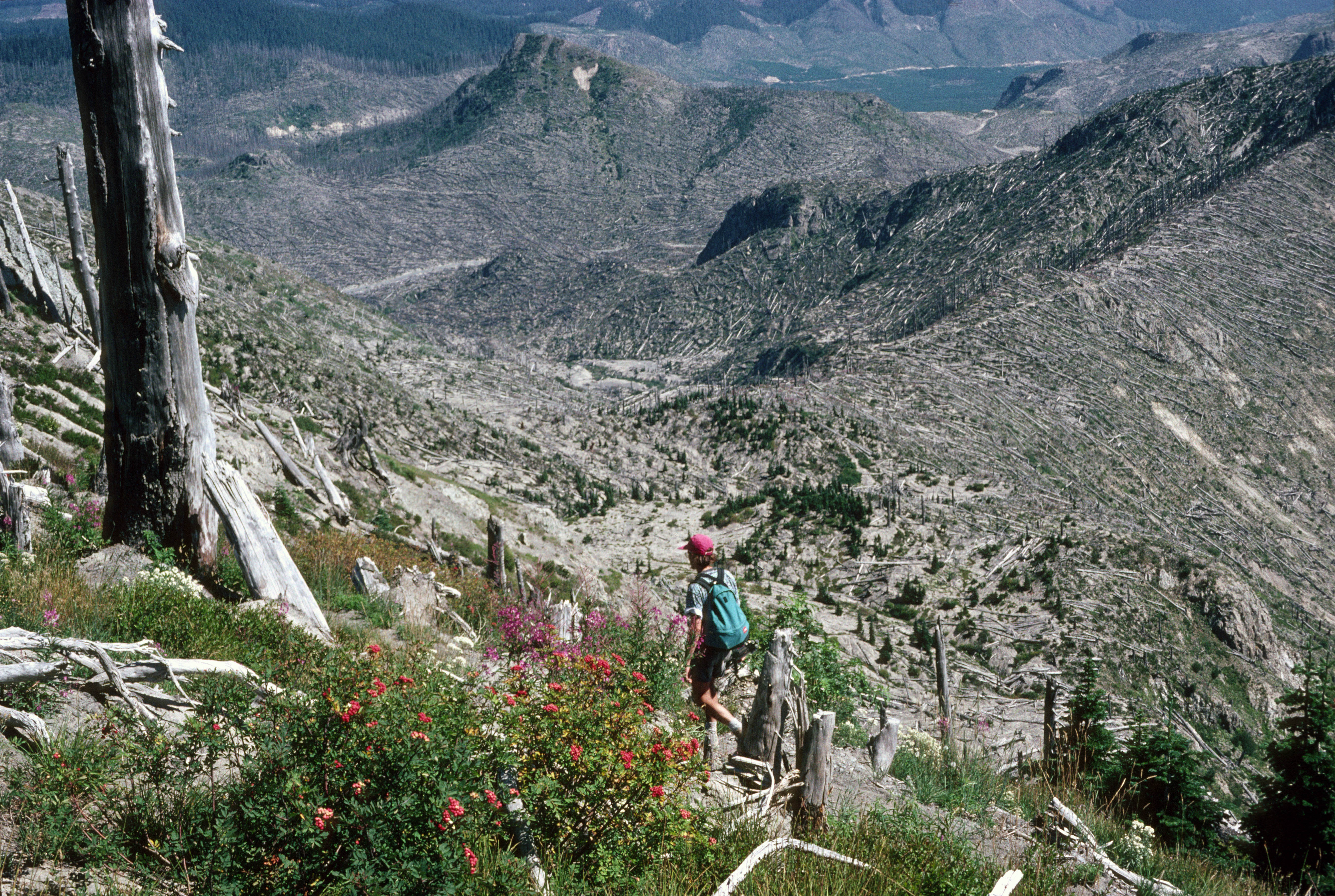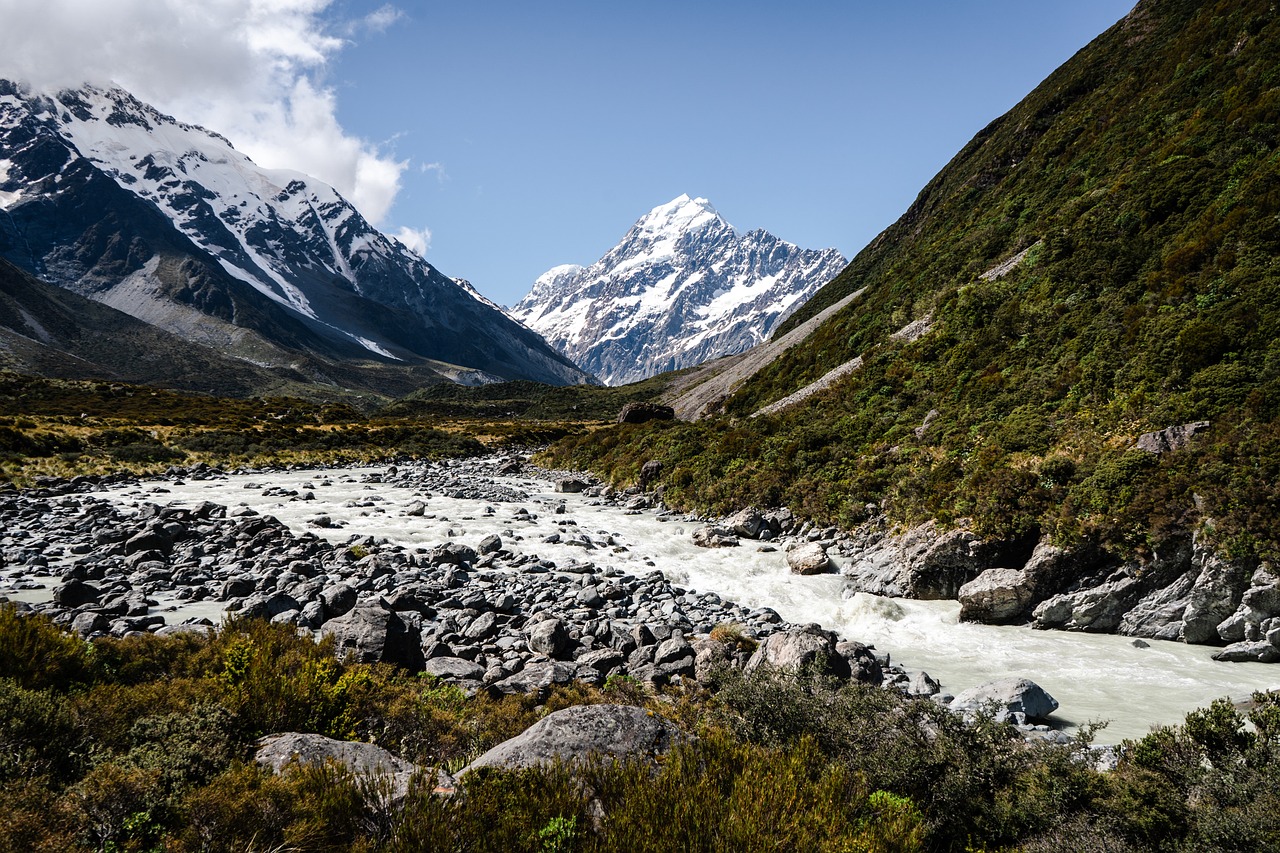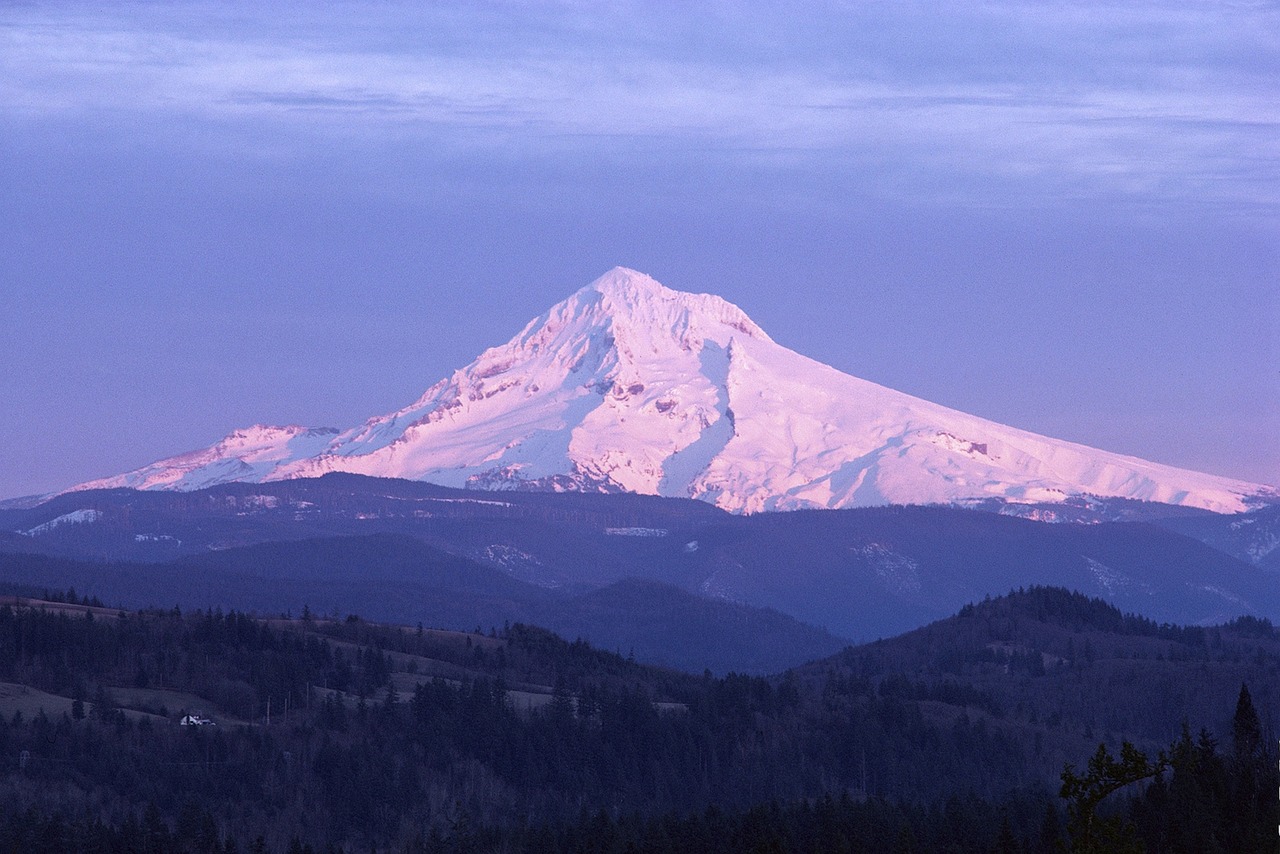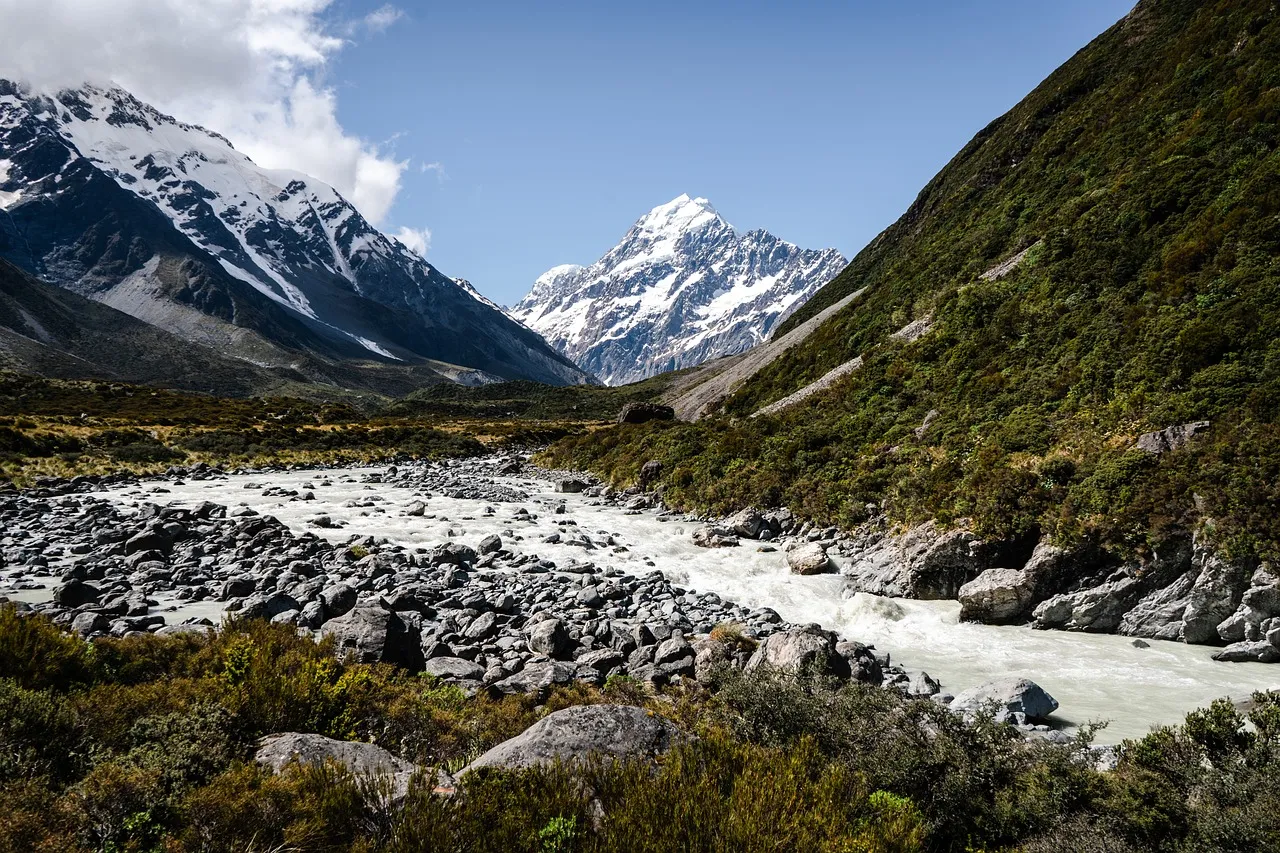Embarking on a hiking adventure in the Pacific Northwest presents a delightful dilemma: hiking trails of Mt St Helens vs Mt Hood. Both mountains offer breathtaking landscapes, diverse ecosystems, and unique hiking experiences. But which one aligns best with your adventure goals? Are you drawn to the rugged terrain shaped by volcanic activity, or do you prefer the lush forests and alpine meadows of a classic mountain hike? This comprehensive guide will help you compare the hiking trails of Mt St Helens vs Mt Hood to choose the perfect destination for your next outdoor excursion.
The Pacific Northwest is a paradise for hikers, and at the heart of this region stand two iconic peaks: Mt St Helens and Mt Hood. Both mountains boast an array of hiking trails that cater to different skill levels and preferences. The choice between the hiking trails of Mt St Helens vs Mt Hood hinges on the type of adventure you seek.
- Mt St Helens: Famous for its catastrophic 1980 eruption, it offers a raw and rugged landscape shaped by volcanic forces.
- Mt Hood: Oregon’s highest peak presents a more traditional mountain experience with verdant forests, alpine meadows, and pristine lakes.
Understanding the unique characteristics of each mountain’s hiking trails will help you decide which one is the ideal destination for your next hiking adventure.

Image Source: Wikipedia Commons
Comparative Overview of Hiking Trails
When comparing the hiking trails of Mt St Helens vs Mt Hood, several factors come into play, including trail difficulty, scenery, wildlife, and overall experience.
Table: Comparative Features of Mt St Helens and Mt Hood Hiking Trails
| Feature | Mt St Helens | Mt Hood |
|---|---|---|
| Trail Difficulty | Moderate to Difficult | Easy to Difficult |
| Popular Trails | Monitor Ridge, Lava Canyon | Timberline Trail, Eagle Creek |
| Elevation Gain | Up to 4,500 ft | Up to 5,300 ft |
| Wildlife Viewing | Limited | Abundant |
| Scenic Routes | Volcanic landscapes | Alpine lakes, forests, meadows |
| Unique Features | Volcanic crater, lava formations | Historic lodge, diverse ecosystems |
| Accessibility | Seasonal limitations due to snow | Year-round access with varying conditions |
| Adventure Type | Geology-focused, rugged terrain | Classic mountain hiking, varied landscapes |
Exploring the Trails of Mt St Helens
Popular Hiking Trails
Mt St Helens offers hikers a unique opportunity to witness the power of nature’s rebirth. The trails here are characterized by volcanic rocks, ash-covered landscapes, and regenerating forests.
1. Monitor Ridge Trail
- Distance: 10 miles round trip
- Elevation Gain: Approximately 4,500 feet
- Difficulty: Challenging
This trail leads to the summit of Mt St Helens, offering panoramic views of the crater, surrounding peaks, and the vast landscape reshaped by the 1980 eruption. The hike involves scrambling over volcanic boulders and navigating steep ascents.
2. Lava Canyon Trail
- Distance: 3-mile loop
- Elevation Gain: Moderate
- Difficulty: Moderate
Lava Canyon Trail showcases stunning waterfalls, deep canyons, and intricate rock formations carved by ancient lava flows. Metal bridges and boardwalks enhance safety while providing close-up views of geological wonders.
Trail Tips for Mt St Helens
- Permits: A permit is required for summit hikes above 4,800 feet.
- Preparation: Wear sturdy hiking boots; the terrain is rocky and uneven.
- Weather: Conditions can change rapidly; bring layers and rain gear.
- Water and Snacks: Carry ample water and high-energy snacks.
- Safety: Inform someone about your hiking plans and expected return time.
Wildlife and Visitor Experiences
While wildlife is less abundant here due to the harsh conditions post-eruption, you may still encounter:
- Elk and Deer: Often seen grazing in regenerating areas.
- Birds: Species like the Mountain Bluebird have returned.
- Small Mammals: Chipmunks and squirrels are making a comeback.
Visitors often describe hiking Mt St Helens as a humbling experience. As one hiker noted:
“Walking through the stark landscape of Mt St Helens feels like stepping onto another planet. The resilience of nature is on full display.”
Discovering Mt Hood’s Scenic Trails
Highlighting Popular Trails
Mt Hood offers a quintessential mountain hiking experience with diverse trails ranging from leisurely walks to challenging climbs.
1. Timberline Trail
- Distance: 40-mile loop
- Elevation Gain: Approximately 9,000 feet cumulative
- Difficulty: Difficult
Circling the entire mountain, the Timberline Trail passes through lush forests, alpine meadows, and over glacial streams. It’s ideal for multi-day backpacking trips, offering ever-changing vistas of Mt Hood.
2. Eagle Creek Trail
- Distance: Up to 13 miles round trip (to Tunnel Falls)
- Elevation Gain: Moderate
- Difficulty: Easy to Moderate
Located in the Columbia River Gorge, this trail features numerous waterfalls, including the spectacular Punchbowl Falls and Tunnel Falls. The path is carved into basalt cliffs, offering thrilling views.
Hiking Tips for Mt Hood
- Trail Maps: Use detailed maps or GPS apps; some trails intersect and can be confusing.
- Layered Clothing: Weather can vary; dress in layers for comfort.
- Camping Permits: Required for overnight stays in certain areas.
- Wildlife Awareness: Bears and cougars inhabit the region; know safety protocols.
- Leave No Trace: Preserve the natural beauty by packing out all trash.
Flora, Fauna, and Visitor Experiences
Mt Hood’s rich ecosystems are teeming with wildlife and plant species.
- Wildlife: Deer, elk, foxes, eagles, and a variety of birds.
- Flora: Wildflowers blanket the meadows in summer; forests are dense with evergreens.
- Visitor Quote: “Every turn on the trail reveals a new wonder—from crystal-clear lakes to fields of wildflowers. Mt Hood is a hiker’s dream come true.”
Seasonal Hiking Adventures
The hiking trails of Mt St Helens vs Mt Hood offer distinct experiences across different seasons.
Table: Seasonal Highlights
| Season | Mt St Helens | Mt Hood |
|---|---|---|
| Spring | Wildflowers bloom amidst volcanic terrain; trails are less crowded. | Snow melts revealing trails; waterfalls are at their fullest. |
| Summer | Peak hiking season; extended daylight hours; vibrant landscape contrasts. | Ideal for alpine hikes; wildflowers in full bloom; perfect for camping and backpacking. |
| Fall | Cooler temperatures; dramatic fall foliage adds color to the landscape; excellent for photography. | Stunning autumn colors; fewer crowds; crisp air enhances hiking experience. |
| Winter | Snow covers the landscape; some trails close; snowshoeing and winter sports available in designated areas. | Winter sports paradise; skiing and snowboarding at Timberline Lodge and Mt Hood Meadows; snowshoeing trails open. |
Adventure Tourism and Outdoor Activities
Beyond hiking, both mountains are hubs for adventure tourism, offering activities such as:
- Mt St Helens:
- Volcano Tours: Guided tours provide in-depth knowledge about volcanic activity.
- Mountaineering: Winter ascents for experienced climbers.
- Educational Programs: Learn about geology and ecology at visitor centers.
- Mt Hood:
- Skiing and Snowboarding: Home to multiple ski resorts, including Timberline Lodge.
- Mountain Biking: Trails for all levels weave through forests and meadows.
- Fishing and Boating: Lakes and rivers offer water-based recreation.
Adventure tourism supports local economies and encourages environmental conservation efforts, ensuring that the natural beauty of these mountains is preserved for future generations.
Frequently Asked Questions
How hard is the Mt St Helens hike?
The summit hike via the Monitor Ridge Trail is challenging, involving a 4,500-foot elevation gain over steep and rocky terrain. It’s suitable for experienced hikers who are prepared for a strenuous ascent.
How long is a hike on Mt Hood?
Hiking durations vary greatly on Mt Hood. The Timberline Trail is a 40-mile loop requiring multiple days, while shorter hikes like Mirror Lake Trail are around 3 miles round trip. Choose trails that match your fitness level and time constraints.
How difficult is hiking Mt Hood?
Mt Hood offers trails ranging from easy nature walks to difficult summit climbs. The South Side Route to the summit is technically challenging and requires mountaineering skills and equipment. Many moderate trails are suitable for day hikes.
How close are Mt St Helens and Mt Hood?
Mt St Helens and Mt Hood are approximately 60 miles apart as the crow flies, making it feasible to visit both in one trip if time allows. Driving between the two takes about 2 to 2.5 hours, depending on the route and traffic conditions.
Are permits required for hiking?
- Mt St Helens: Permits are required for summit climbs above 4,800 feet from April 1 to October 31.
- Mt Hood: Wilderness permits are required for certain areas and can often be obtained at trailheads.
Comparative Overview of Hiking Trails
When comparing the hiking trails of Mt St Helens vs Mt Hood, it’s essential to consider various aspects such as trail accessibility, elevation gain, and overall experience. Below is a handy table summarizing key differences.
| Feature | Mt. St. Helens | Mt. Hood |
|---|---|---|
| Trail Difficulty | Moderate to Difficult | Easy to Difficult |
| Popular Trails | Monitor Ridge, Lava Canyon | Timberline Trail, Eagle Creek |
| Elevation Gain | 4,500 ft | 5,300 ft |
| Wildlife Viewing | Limited | Abundant |
| Scenic Routes | Volcanic landscapes | Alpine lakes and forests |
As you can see, each mountain provides unique offerings. If you fancy a challenge amidst volcanic rock formations and a rich geological history, then Mt. St. Helens is your best bet. However, if you prefer diversity in nature, with opportunities for wildlife viewing and various trail difficulties, Mt. Hood might be more appealing.
Exploring the Trails of Mt. St. Helens
Let’s take a closer look at what makes the trails of Mt. St. Helens stand out. Known for its catastrophic eruption in 1980, this mountain offers hikers a glimpse into nature’s raw power. The landscape is dotted with remnants of the eruption, providing a unique backdrop for your adventure.
Popular Hiking Trails
Some popular trails include:
- Monitor Ridge: A challenging 10-mile round trip with an elevation gain of about 4,500 feet. The views from the top are absolutely breathtaking!
- Lava Canyon: A more moderate 3-mile loop that lets you explore the stunning geological features shaped by volcanic activity.
Hiking Mt. St. Helens isn’t just about the physical challenge; it’s also about experiencing the history of this remarkable site. The trails are well-maintained, and there are plenty of informational signs along the way that provide insight into the volcanic eruption and its aftermath.
Trail Tips for Mt. St. Helens
Before you lace up your hiking boots, here are a few tips:
- Check park regulations and trail conditions ahead of time.
- Bring plenty of water and snacks, especially for the longer hikes.
- Wear sturdy footwear; the terrain can be rocky and uneven.
- Consider visiting during the off-peak season for a quieter experience.
Visitor Experiences and Wildlife
While hiking Mt. St. Helens, you might not encounter as much wildlife as you would on Mt. Hood, but the flora and fauna that do exist here have adapted to the harsh conditions. You might spot some deer, elk, or even the elusive black bear if you’re lucky!
As one visitor aptly put it, “Hiking Mt. St. Helens is like walking through a living history book. The scars of the past tell stories that are both humbling and inspiring.”
Discovering Mt. Hood’s Scenic Trails
Now let’s switch gears and explore the hiking trails of Mt. Hood. This stunning mountain is a true gem of the Pacific Northwest, offering a diverse range of trails suitable for all levels of hikers. From the lush forests to sparkling alpine lakes, Mt. Hood has something for everyone.
Highlighting Popular Trails
Some must-visit trails include:
- Timberline Trail: A classic 40-mile loop that offers incredible views of the mountain and surrounding wilderness. This trail is perfect for those seeking a multi-day backpacking adventure.
- Eagle Creek Trail: A family-friendly hike with lush greenery and waterfalls, making it a great choice for a day hike.
Many trails on Mt. Hood are well-marked and accessible, making it easier for hikers to explore the area. Whether you’re looking for a leisurely stroll or a rigorous workout, you’ll find the perfect trail here.
Trail Quotes and Experiences
One hiker shared, “Hiking around Mt. Hood is like stepping into a painting. The vibrant colors and diverse landscapes take your breath away!”
Indeed, the vibrant ecosystems here provide ample opportunities for wildlife viewing. Keep your eyes peeled for deer, eagles, and even the occasional coyote as you traverse the trails.
Hiking Tips for Mt. Hood
To make the most of your experience, consider these tips:
- Utilize trail maps and smartphone apps to navigate the area.
- Dress in layers; weather conditions can change rapidly.
- Don’t forget your camera; the scenic views are Instagram-worthy!
- Be mindful of other hikers and maintain trail etiquette.

Source: Pexels.com
Seasonal Hiking Adventures
When it comes to seasonal hiking, both Mt. St. Helens and Mt. Hood offer different experiences throughout the year. Let’s break it down!
| Season | Mt. St. Helens | Mt. Hood |
|---|---|---|
| Spring | Wildflowers bloom; trails are less crowded. | Snow melting; great for early-season hikes. |
| Summer | Peak hiking season; trails can get busy. | Perfect for alpine lake hikes and camping. |
| Fall | Stunning fall colors; ideal for photography. | Cool temperatures; fewer crowds. |
| Winter | Snowshoeing and winter hikes available. | Skiing and snowboarding opportunities. |
As you can see, both mountains have their unique charm in every season. Whether you prefer the vibrant colors of fall or the crisp air of winter, there’s always an adventure waiting for you!
Adventure Tourism and Outdoor Activities
Both Mt. St. Helens and Mt. Hood are popular destinations for adventure tourism. From hiking and camping to skiing and snowboarding, these mountains cater to a variety of outdoor activities. The influx of visitors not only supports local businesses but also encourages the preservation of these natural wonders.
As one local put it, “The mountains are more than just a backdrop; they’re a way of life here!”
Your Next Hiking Adventure Awaits
Ultimately, the choice between the hiking trails of Mt St Helens vs Mt Hood boils down to personal preference. Are you drawn to the rugged volcanic landscapes and the story of nature’s rebirth at Mt. St. Helens? Or does the enchanting beauty and variety of trails at Mt. Hood call your name? Whichever you choose, both mountains will leave you with unforgettable memories and a deeper appreciation for the beauty of the Pacific Northwest.

Source: Pexels.com
Frequently Asked Questions
Q: How hard is Mt St Helens hike?
A: The hike to the summit of Mt. St. Helens is considered challenging, with significant elevation gain and rocky terrain. It’s suitable for experienced hikers who are prepared for a strenuous trek.
Q: How long of a hike is Mt. Hood?
A: Hiking trails on Mt. Hood vary in length. The Timberline Trail is about 40 miles long, whereas other trails, like Eagle Creek, can be as short as 3 miles. Choose based on your fitness level and time available.
Q: How hard is hiking Mt. Hood?
A: Hiking Mt. Hood can range from easy to difficult depending on the trail you choose. Many trails are suitable for beginners, while others, especially those leading to the summit, are quite challenging.
Q: How close are Mt St Helens and Mt. Hood?
A: Mt. St. Helens and Mt. Hood are approximately 50 miles apart, making it feasible to visit both in one trip.

